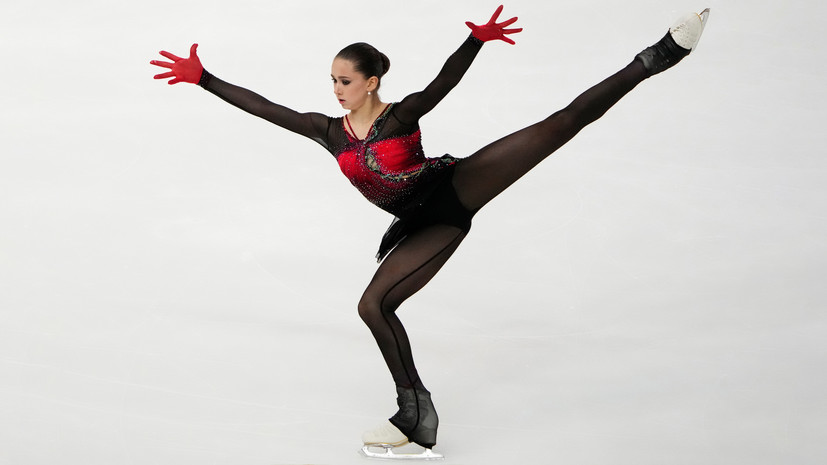Russian figure skaters, with their performances in the short program of the Grand Prix stage in Sochi, left several questions open at once.
Will all three ice hostesses be able to rise to the podium after the not very successful performance of Maya Khromykh?
Will Kamila Valieva beat two more world records?
Will Elizaveta Tuktamysheva's series of flawless triple axels continue?
The answer to the first one was perhaps the most important for the fans.
Getting on the podium made all three athletes participate in the Grand Prix finals, where Anna Shcherbakova had already de jure and Alena Kostornaya de facto.
In figure skating, there has never been a case when the representation of one country reached five people.
In order not to miss this historic opportunity, Lame was left to bypass the American Mariah Bell and the Canadian Madeline Shiraz, whom she skipped ahead on the first day.
This was not so easy to do, given how disastrous the previous performance of "Roxanne's Tango" was. Between the two stages of the Grand Prix, student Eteri Tutberidze went to the Warsaw Cup minor tournament, where she earned only negative emotions for herself. In the free program, Khromykh did not succeed in both quadruple sheepskin coats, and they were followed by blots on other jumps and on choreographic elements.
In Sochi, Khromykh managed to almost rehabilitate himself. Her rental began with a high-quality quad-toe loop, complemented by a jump in two turns. True, the second attempt did not work because of the step-out, but even this performance of the element was appreciated by the judges higher than anything Bell and Shiraz could be capable of. Khromykh cleanly made the step sequence, which was also not obtained in Turin, and pleased herself with the best mark in her career for a free program - 154.97 points. With a total score of 219.69 points, she easily overtook the Belgian Luna Hendrix, who appeared in front of her, and the American and Canadian who went next on the ice.
Khromykh's leadership remained until the speech of Tuktamysheva.
In the current Grand Prix series, she has never received a deduction on a triple axel, and in the short program of the Sochi stage she made this jump for the fifth time in a row.
The series continued in arbitrary rental, but then ended immediately.
The second attempt by Tuktamysheva also failed because of the spade.
At the same time, the 24-year-old skater had much more serious reasons for upset.
The season for her began with amazing progress in the evaluation for the components, but now the incendiary performance to the oriental music of the judges is not so impressive.
Twice in a row Tuktamysheva was rated worse than at the previous tournament
Someone may think this is not too significant, because the technical content of the student of Alexei Mishin makes it easy to compensate for this, but in the Olympic season there can be no trifles. It is hardly possible to claim medals in serious tournaments if some arbitrators even feel sorry for the eight, and it was with this that Tuktamysheva had to face in Sochi. Instead of new personal records, she received 229.23 points on the basis of two programs.
Kamila Valieva does not have to complain about the indifference of the judges, especially since she herself does not give any reason for this. Her "Bolero" completed the Russian stage of the Grand Prix and became the final one could only dream of. Almost every element of the 15-year-old figure skater provided her a place in history. First, she scored record high marks for the quadruple salchow and immediately repeated this achievement for the triple axel and a cascade of quadruple and triple sheepskin coats. For all these complex elements, Valieva did not receive marks below three. She became the first figure skater in history to receive allowances for triple axel and quadruple jumps in the same program.
With every step and spin, which were also generously rewarded by the referees, Valieva confidently approached the setting of two new world records. The actively growing score counter stopped at 185.29 points for the free program and 272.71 points for two rentals. At the same time, the student Tutberidze even managed to leave a margin for herself for the future, when, in another combination with a quadruple sheepskin coat, she made a double salchow instead of the planned triple.
For the first time in three years, all three highest achievements for girls were established in one tournament.
The last to achieve this was Alina Zagitova, when the changes in the judging system only came into force after the Olympics in Pyeongchang.
At the same time, Zagitova set a seemingly eternal record for components in an arbitrary program, but he is also now beaten by Valieva thanks to five dozen at once set by the judges.

